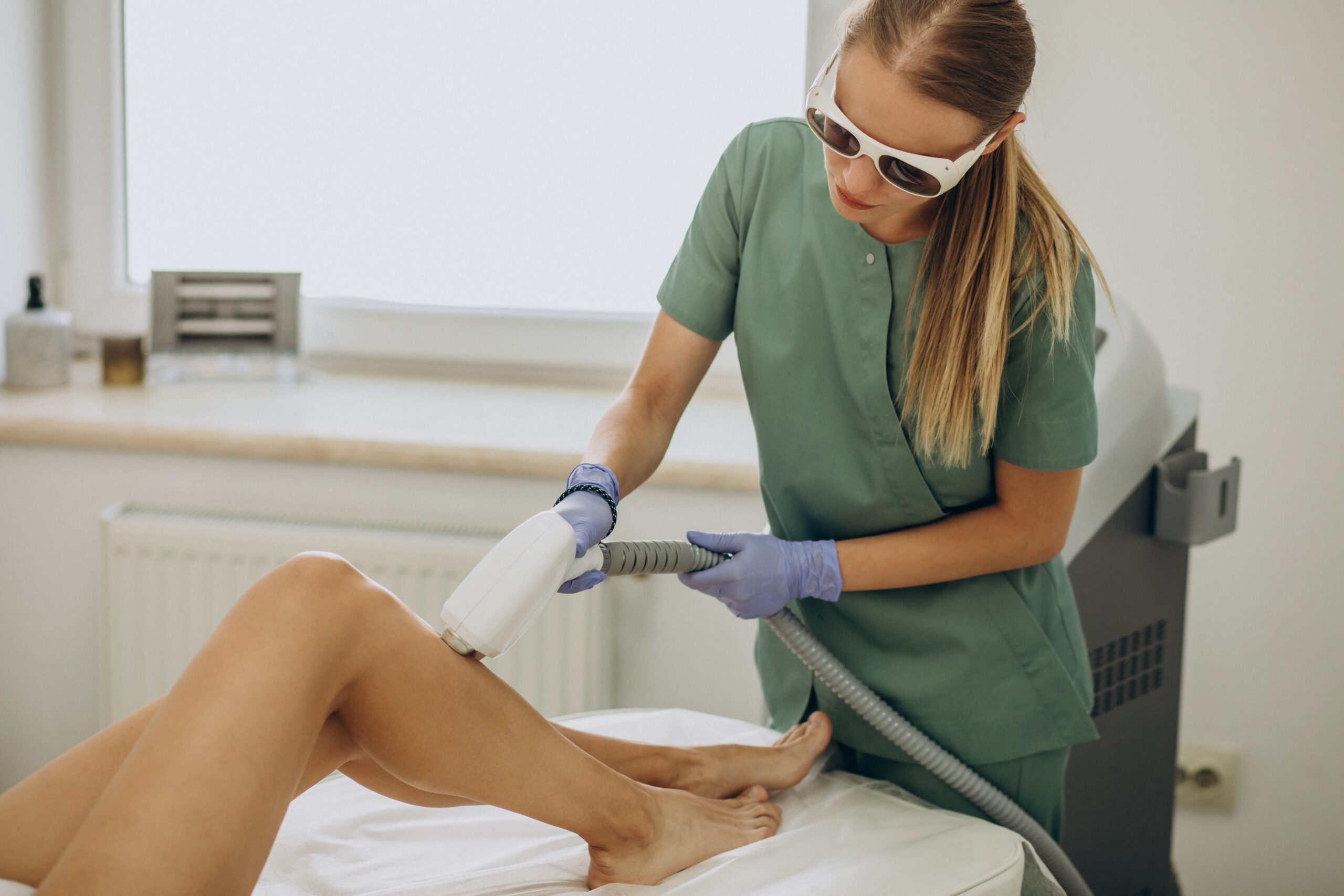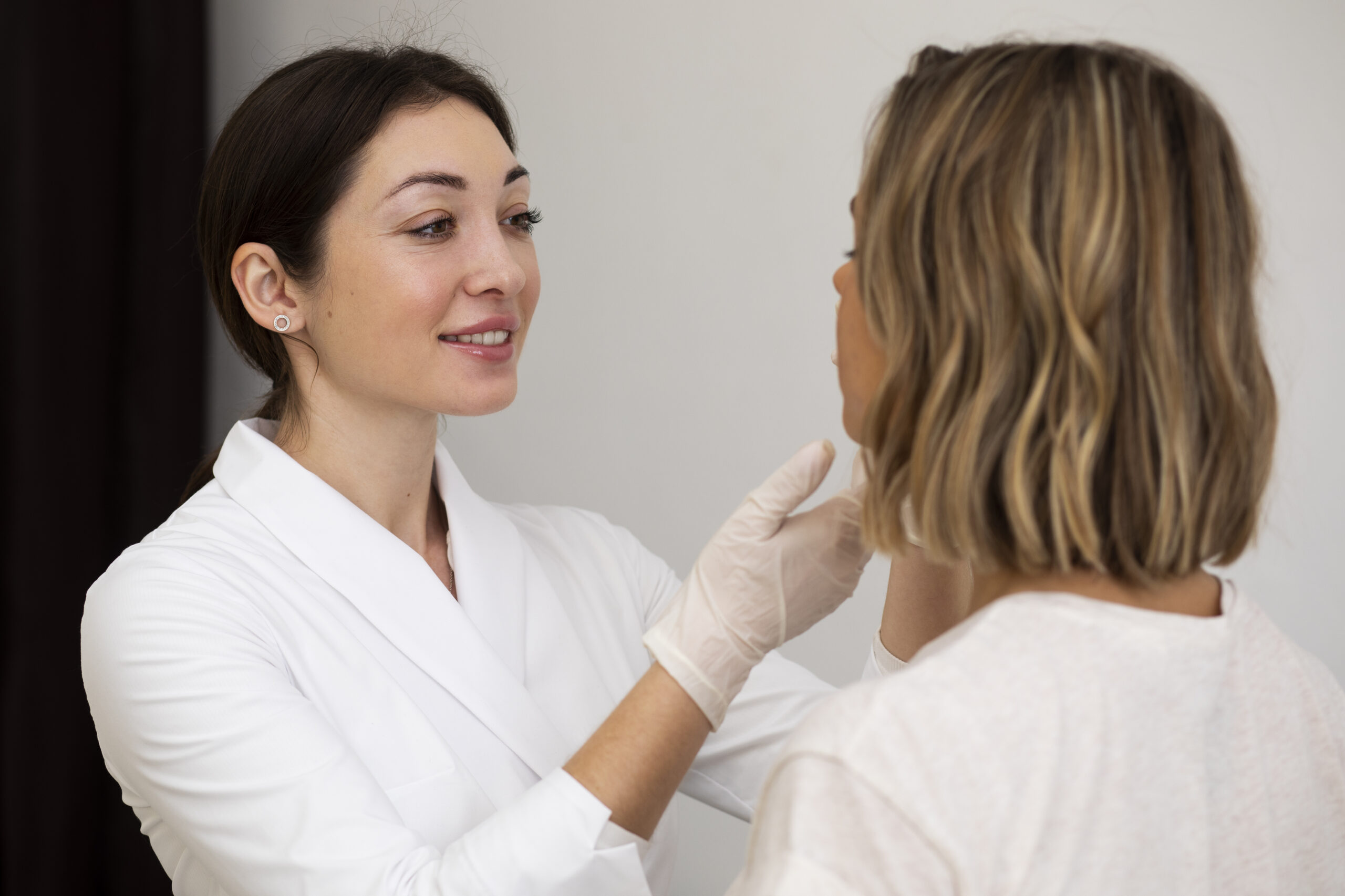Laser hair removal is a method to remove unwanted body hair. Individuals usually use it on their underarms, legs, or bikini areas. It’s not permanent, but the effects last longer than shaving or waxing. Most individuals need about six visits. It’s usually secure, but side effects may appear.
Many people considering laser hair removal![]() wonder whether the laser hurts. Although laser hair removal treatments can cause discomfort, they are less painful
wonder whether the laser hurts. Although laser hair removal treatments can cause discomfort, they are less painful![]() than other hair removal methods, such as waxing or an electric epilator.
than other hair removal methods, such as waxing or an electric epilator.
The sensations associated with laser hair removal may depend on several factors, so patient experiences may vary.
It should be remembered that laser hair removal lasts from five to several dozen minutes, depending on the size of the treatment area. Therefore, even if a feeling of discomfort occurs, it is short-lived.

Laser hair removal is prepared to target hair follicles with high-heat laser beams. You may feel like the skin is snapped with a rubber band and mild discomfort after the procedure. Sometimes, there is also redness and skin irritation.
The pain level of the method depends on the body part undergoing laser hair removal. The more sensitive the skin, the more unbearable it can be.
Remember that achieving perfectly smooth and hairless skin takes time and is associated with the need to repeat treatments. The growth rate of individual hairs is different, which is why the first visible effects of laser hair removal are visible after regular use for two months. Laser hair removal is performed at 4-week intervals, and there should be about 4-5 of them on one body area. Most often, there is no need to use the laser.
The laser beam penetrates the hair pigment – melanin, and reaches the hair follicle, disrupting its structure and destroying the hair follicles. It is worth emphasizing that the laser beam works extremely precisely and does not damage the surrounding tissues – only the hair follicles.
The laser system guarantees safety during the procedure, based on the phenomenon of selective photothermolysis. This means that the laser has a destructive effect on the dark pigment contained in the hair and does not affect the light color of our skin. Thanks to this, we can perform the procedure on sensitive body parts such as the bikini line, armpits, or face.
Laser hair removal is for people who want to permanently remove unwanted hair on selected body parts. The qualification visit![]() excludes possible contraindications to laser hair removal and clarifies any doubts. Before performing the procedure, the professional should interview the patient about the patient's general health, comorbidities, and medications taken.
excludes possible contraindications to laser hair removal and clarifies any doubts. Before performing the procedure, the professional should interview the patient about the patient's general health, comorbidities, and medications taken.
During the first visit, after talking to the patient, a laser test may also be performed. This test aims to determine the reaction of a given body area to a beam of light and is recommended in particular for people with intense skin pigmentation.
Contraindications to laser hair removal include:
Preparing yourself properly for laser hair removal to bring the best possible results would be best. For about 4 weeks before the procedure, stop using depilatories and remove hair with wax or tweezers.
During this time, you should stop tanning (including spray tans and self-tanners) and stop taking supplements and herbs with photosensitizing effects. Before the procedure![]() , the skin should be cleansed without balms or antiperspirants.
, the skin should be cleansed without balms or antiperspirants.
In addition to gentle skin care focused on regeneration after laser hair removal, avoid swimming pools and saunas for two weeks. It is also not recommended to wear very tight clothing that could irritate and cause abrasions on the skin.
Many places where laser hair removal is performed offer the possibility of prior consultation. It is a great way to check if the procedure is for you. When preparing for such a meeting, it is worth leaving a piece of unshaven skin on the part you want to undergo laser hair removal. It will allow the specialist to see your hair and assess the effectiveness of the therapy.

Laser hair removal is effective if done correctly, but to achieve lasting effects, it is necessary to perform several series of treatments. The number of sessions needed to remove hair is influenced by many factors – including the thickness and color of the hair and the type of complexion. Achieving the fastest effects is possible in the case of light skin and, at the same time, thick, dark hair – these are the ones most susceptible to the effects of the light emitted by the laser.
To achieve the desired effects, at least six treatments are needed at intervals of several weeks, usually around 4-6 weeks. However, you may need more treatments, which will make the entire process of getting rid of unwanted hair longer. It is worth remembering to maintain regular breaks because the laser is effective only in the hair growth phase. When can we notice a hair reduction? In some cases, the first effects are visible after just three treatments.
The first effects of laser hair removal are noticeable after the first visit. The full effect of smooth skin requires several cyclical series. In most people who decide to epilate, the hair follicle can be effectively destroyed. Still, the body's natural ability to regenerate means that individual hairs may appear after a few months or even a year. Hormonal changes after pregnancy or menopause can also affect hair regrowth. In such a situation, it is advisable to perform reminder treatments to help eliminate this problem, even for life.
Immediately after the procedure, the skin may be slightly red and irritated, and there may also be swelling and perifollicular edema, which should quickly subside after the procedure has been performed correctly. Proper care of the skin subjected to the procedure will help reduce unpleasant symptoms. Choose cosmetics that do not contain irritating substances in the regeneration period, preferably dermocosmetics. It is worth selecting products with a nourishing and soothing effect that will accelerate the healing process.
Irritated skin requires proper hydration first and foremost. For this purpose, you should use a good cosmetic containing healing and regenerative substances. Thanks to this, the action will not only bring the expected effects but also accelerate the healing time, and the skin will gain additional protection against the effects of external factors that could contribute to the intensification of the problem.
Recommended cosmetics for the care of skin irritated by depilation are dermocosmetics![]() (so-called pharmacy cosmetics). In addition, they contain active ingredients such as:
(so-called pharmacy cosmetics). In addition, they contain active ingredients such as:
A person who has experienced irritation after depilation should opt for two dermocosmetics: a delicate foam or balm for washing and a moisturizing cream. Use them regularly – morning and evening. In addition, irritated skin must be protected from the sun (by using a cream with a filter and covering it with clothing). If necessary, a cold compress can be applied several times a day.
If purulent pimples or cuts appear after depilation that is challenging to heal, it is necessary to consult a dermatologist. It is usually a sign of infection. The specialist can issue a prescription for an antibiotic ointment, which should be used for several days.
Sometimes, the specialist will suggest other procedures, e.g., using an epilator, tweezers, or shaving.
Facial hair removal is a special type of hair removal. It requires great care and delicate methods. After all, you can't hide mistakes and irritations on the face like you can on your legs or armpits.
When it comes to the face, hair removal is performed on the eyebrows or the mustache. Eyebrow hair removal is like a styling treatment closely related to make-up, while mustache hair removal is a purely aesthetic procedure. It is most often performed by brunettes whose hair is thick and visible.
As part of your preparation for facial hair removal, think carefully about the procedure's method. You should avoid these methods if you have sensitive, vascular, or acne-prone skin. Using tweezers is better (but only if there are not many hairs to remove and individual plucking is not too troublesome). If hair removal by plucking does not work, try shaving the hair.
A special eyebrow knife is used for this. The blade's small size and precision allow you to remove hair up to the skin and control the shape of the eyebrows.
Many specialists recommend a facial hair removal cream for mustaches. Of course, before using it, you should do an allergy test. Do not do it on your face because if a reaction does occur, it can cover not only the part of the skin covered with the cream but even the entire face. A good place to do the test is the inside of your wrist. If the cream is going to cause an allergic reaction, it will happen within 24 hours of application.
The best thing you can do to prepare the skin of your legs for depilation is exfoliation. Blackheads and pimples form due to little hairs growing under the skin on the legs- especially on the back and inner thighs. Coarse-grained peeling will allow you to eliminate all these changes, thanks to which you will remove more hair, and the smooth effect will last longer. Peeling is also significant due to places of excessive accumulation of dead skin – knees and ankles.
A thick layer of calloused skin is like an impenetrable barrier during hair removal. Such skin cannot be softened sufficiently during bathing, so pulling out hairs with plasters and an epilator will be troublesome and painful.

When it comes to intimate epilation, the bikini area presents specific challenges. Home epilation in this area can be particularly challenging due to the difficulty of performing a smoothing peel and the risk of cuts when using a razor in hard-to-reach zones. In addition to the previously mentioned considerations, there are several other important rules to remember.
Pimples can develop in the bikini area due to previous epilations and friction from underwear. Never epilate skin covered in such pimples! It would be best to look at your skin in the mirror before starting epilating. Check your groin for moles and other protruding growths that you could accidentally damage with the razor blade. If you find any, cover them with small plasters.
If you will perform deep hair removal, be sure to wash yourself before the procedure. However, if you decide to depilate your intimate areas with wax or plasters, additionally disinfect the skin. The hair in the bikini area is intense and hard, while the skin is delicate. During hair removal, slight bleeding from the hair follicles may occur. Any bacteria that penetrate the wounds will cause an itchy or painful rash.